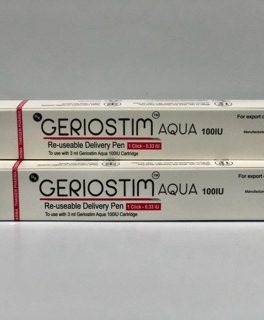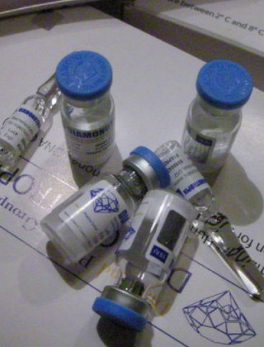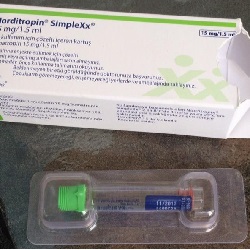Description
Generic IGF-1 LR3 is an 83 amino acid analog of human IGF-I actually comprising the complete human IGF-1 sequence but with the substitution of an Arg for the Glu at position 3, as well as a 13 amino acid extension peptide at the N-terminus. This makes Long R3IGF-I significantly more potent ( 2-3x) than IGF-I in studies, because it has a lower affinity to be rendered inactive by IGF binding proteins, and consequently more potential activity in the body.
Generic IGF-1 LR3 , also known as Long Arg3 IGF-1, is a recombinant protein analogue of human Insulin-Like Growth Factor-1 that has a molar mass of 9,200 Daltons and is comprised of 83 amino acids. IGF-1 LR3 comprises the complete IGF-1 sequence, but with a 13 amino acid extension on the B-Terminus domain and the substitution of an Arginine for the Glutamic Acid at position 3. The LR3 analogue of IGF-1 was created with the intent to drastically increase the biological activity of the protein and IGF-LR3 is several times more potent than rhIGF-1. This specific sequence alteration has decreased the affinity of binding to the IGFBPs, which control the biological actions of IGF-1 and prevent the protein from reaching the IGF-1 receptors.
IGF-1 LR3 is an 83 amino acid analogue of human IGF-1 that has been modified to include a 13 amino acid extension on its N-Terminus and the substitution of an Arginine amino acid for Glutamine at position 3. While IGF-1 LR3 is comprised of the the complete human IGF-1 sequence, these modifications have rendered the LR3 version to be much more potent than IGF-1 in-vitro and in-vivo. The result of these modifications is that IGF-1 LR3 does not bind as strongly to the IGFBPs, which modify the biological actions of IGF-1. Resultantly, IGF-1 LR3 binds to the type 1 IGF-1 receptor with similar affinity to that of wild type IGF-1, but with higher biological activity and has several advantages over recombinant insulin. The supplementation of mammalian cell cultures with Long R3 IGF-1 at a much lower concentration results in more highly elevated productivity than with standard concentrations of insulin and/or standard IGF-1. IGF-1 LR3 is better able to stimulate the type 1 IGF receptor and thus induce a higher level of activation of intracellular signaling, which is responsible for promoting cell proliferation and the inhibition of apoptosis. http://konozahealthbiotech.com














Reviews
There are no reviews yet.